What's Up? October 2024
Astronomer Rosie talks you through this month's highlights!
The Autumn skies are truly here! Hear the sound of leaves crunching under your feet and the aroma of pumpkin spice and cinnamon everywhere.
Cassiopeia
Cassiopeia in the Greek mythologies was the queen of Aethiopia (modern day Sudan). Vain and showing no regard for the gods, she landed her family in a bit of trouble which her daughter Andromeda ended up having to pay for. Luckily before Andromeda’s sacrifice, the Greek hero Perseus ended up saving the day as he had fortunately come back from a dangerous quest and just so happened to have the chopped-off head of Medusa in his sack.
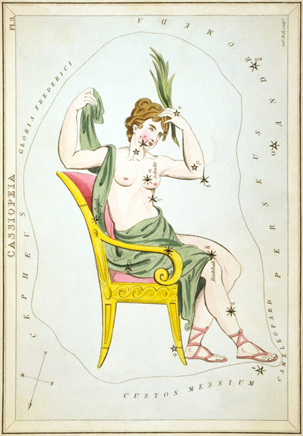
For her punishment of angering the god Poseidon, the queen was made a constellation to forever circulate the north star on her throne, spending half the year clinging to it for dear life so she doesn’t fall off. The constellation is very bright and one of the better well-known figures in the sky because it looks like a big “W”, made up of 5 bright stars.
Cassiopeia is one of the 88 modern-day constellations, originally stemming from Greek mythology, but of course because it’s such a bright and obvious pattern in the sky many cultures across the world have seen figures in this area. Ancient Chinese astronomers saw a chariot, Hindus see the princess Sharmishtha, and in some Arab atlases the constellation is meant to be a women’s hand dyed with henna.
Image: Queen Cassiopeia on her throne, Urania‘s Mirror, 1824. Sidney Hall.
Cassiopeia will be extremely high in the sky in October. It’s always towards the North no matter what time of year. However, in October it will be North-East, getting to straight up above at around 1am.
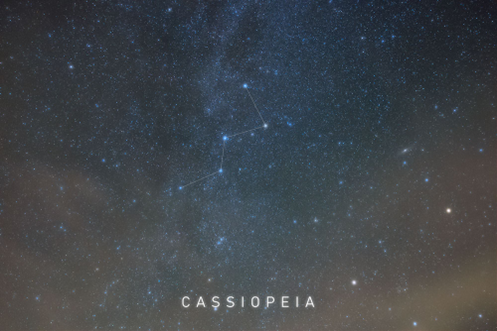
Image: The “W” shape of Cassiopeia. AstroBackyard
Deep Sky Objects
Cassiopeia is host to a whole load of fantastic deep sky objects to observe. I want to mention a couple that we don't talk about too much at the observatory but are fantastic objects to capture if you have a telescope at home.
The first is the Bubble Nebula! So called because it looks like, well, a bubble.
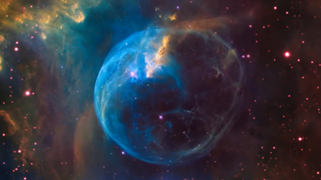
Image: The Bubble Nebula within Cassieopeia, taken with the Hubble Space Telescope. NASA's Goddard Space Flight Center.
The reason it looks like a bubble is because inside there is an extremely hot, humongous, bright star about 7,100 light-years away. It produces powerful stellar winds travelling at four million miles per hour. These push gas and dust outwards forming a layer around it.
Big, hot stars burn very brightly, but only for a short time. Scientists reckon that in 10-20 million years the star will die in a supernova explosion, “popping” the bubble!
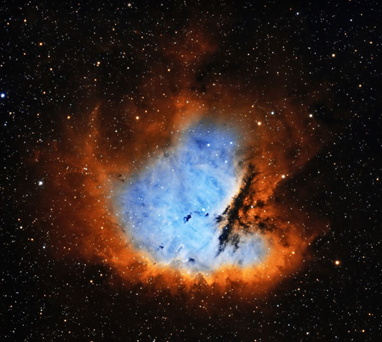 The second object to mention is another beautiful gas cloud, but one that looks like it’s munching its way across the galaxy, swallowing up each star along its path. That’s because it resembles the video-game character Pacman. Also known as NGC 281, the Pacman Nebula is located 9,500 light-years away. A very young star cluster lies within which ionizes the gas and makes it shine an array of bright colours. The “mouth” of Pacman is dust which is blocking the light from behind it.
The second object to mention is another beautiful gas cloud, but one that looks like it’s munching its way across the galaxy, swallowing up each star along its path. That’s because it resembles the video-game character Pacman. Also known as NGC 281, the Pacman Nebula is located 9,500 light-years away. A very young star cluster lies within which ionizes the gas and makes it shine an array of bright colours. The “mouth” of Pacman is dust which is blocking the light from behind it.
Image: The Pacman Nebula within Cassiopeia. Steve Leonard
Meteor Showers
We have two meteor showers this month! The Draconids and the Orionids. Named after where the meteors or shooting stars appear to be radiating from, you’ll want to be looking near the constellation of Draco and Orion for these showers.
The first to appear will be the Draconids on the 8th and 9th of October. The best time will be when Draco is highest in the sky, which is the early evening. This is usually a quiet shower with only a few per hour appearing. However, there is no moon that night so fingers crossed we’ll see some shooting stars.
The second shower to appear is a little more active; the Orionids peaking on the 21st. Normally we’d recommend staying up a bit later for this shower, however the moon will be 79% illuminated and getting higher in the sky as the night goes on, so earlier in the evening will be your best chance.
Both of these showers originate from comets. The Orionids are born from the famous Halley’s comet which goes round the Sun approximately once every 80 years.
Our Solar System
New Moon: October 2
First Quarter: October 10
Full Moon (Super): October 17
Third Quarter: October 24
Saturn and Jupiter are in their prime this time of year! Get a good look at Saturn before the rings possibly disappear next year when the planet tilts perfectly edge on.
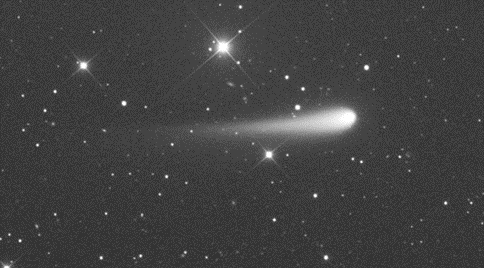
Image: Comet Tsuchinchan-Atlas taken on July 9 from Rio Hurtado Valley, Chile. Taras Prystavski.
This autumn’s biggest anticipation will be comet C/2023 A3 Tsuchinshan–ATLAS. It was discovered in early 2023 and has peaked many people’s interests because it has potential to be a fantastic object to observe. However, we don’t want to get you too excited, comets have a long history of disappointing astronomers and not living up to expectations. But still, we live in hope!
For our lower latitude readers, the comet will be at its brightest and closest to Earth during the first half of October where it will be passing through constellations Virgo and Libra. From the UK it won’t be visible at this time, so we’ll need to wait until the end of October. Look towards the south-west from around 19:00 until 22:00, the comet will be somewhere within the constellation Ophiuchus.
Happy Stargazing!
Author: Rosie Braunholtz
















